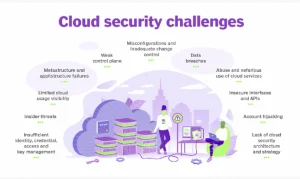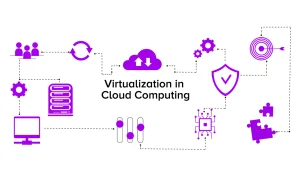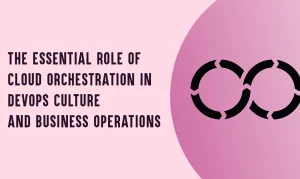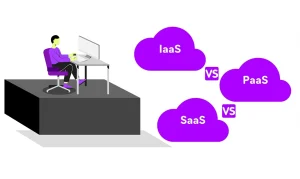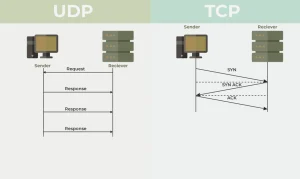In today’s swiftly evolving digital environment, cloud computing stands out as a dominant force in the realm of technology. The capability to remotely store and access data has fundamentally transformed how businesses operate, communicate, and thrive. If you’re looking to keep pace with this dynamic landscape at budget-friendly rates, affordable cloud hosting solutions are the ideal choice for you.
Yet, behind every cloud service lies a crucial component: the data center, serving as the backbone of the entire operation. Data centers play a pivotal role in processing the vast amounts of information that underpin the digital world. Despite their indispensable functions, the relationship between cloud computing and data centers can be intricate and challenging to grasp.
This blog post aims to elucidate the interconnection between cloud computing and data centers, shedding light on how they collaborate to offer the corporate world a seamless computing experience. Let’s delve into the details!
Table of Contents
What is Cloud Computing?

Cloud computing involves the rental of computing resources—such as servers, storage, applications, and databases—over the internet, as opposed to owning physical infrastructure on-site. This arrangement offers businesses increased flexibility, scalability, and efficiency in return for a service fee set by the cloud service providers (CSPs).
Utilizing the internet, cloud computing establishes a pool of configurable IT resources that can be accessed as needed. The provisioning and release of these resources entail minimal management effort. Hosted in data centers operated by CSPs, the cloud infrastructure becomes accessible to users through a network of servers distributed across various locations.
Cloud computing services typically fall into three service models:
- Infrastructure as a Service (IaaS): IaaS provides access to virtualized computing resources, encompassing servers, storage, and networking.
- Platform as a Service (PaaS): PaaS furnishes a platform for the development, testing, and deployment of applications.
- Software as a Service (SaaS): SaaS grants users access to software applications hosted by the cloud service provider.
Types of Cloud Computing
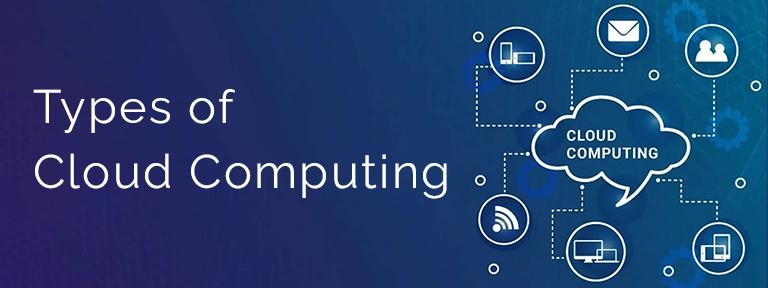
Cloud computing deployment models describe the degree of control and management users have over the underlying computing resources. The following are the three primary types of cloud computing deployment models:
- Public Cloud:
- In this deployment model, third-party providers deliver cloud services over the internet.
- These providers own and oversee the infrastructure, providing computing resources to multiple customers.
- Private Cloud:
- A private cloud is a confidentiality-centric deployment model dedicated to a single organization.
- Private clouds can be hosted on-premises or by a third-party provider, ensuring a high level of control, security, and customization.
- Organizations often opt for private clouds when they require strict adherence to security and compliance regulations or possess highly specialized computing requirements.
- Hybrid Cloud:
- Combining attributes of both public and private clouds, the hybrid cloud offers a balanced approach.
- In a hybrid cloud setup, organizations utilize public cloud services for non-sensitive data and applications, while safeguarding sensitive data and applications in a private cloud environment.
What is a Data Center?
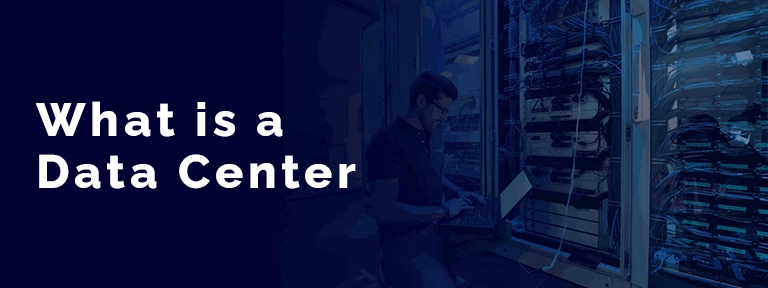
A data center is a facility designed to house computing systems and their related components, including telecommunications and storage systems. Equipped with advanced power and cooling systems, data centers ensure the dependable and uninterrupted functioning of the housed equipment.
These facilities can vary in size, ranging from small server rooms to extensive enterprise-level complexes spanning multiple buildings. Engineered for the storage, management, and transfer of information, data centers empower organizations to handle large volumes of data securely and efficiently.
For any organization heavily reliant on technology and data management, a data center is essential to support critical business operations. Corporate enterprises, government agencies, as well as various institutions and associations, all stand as primary beneficiaries of these central hubs for data processing.
Types of Data Centers
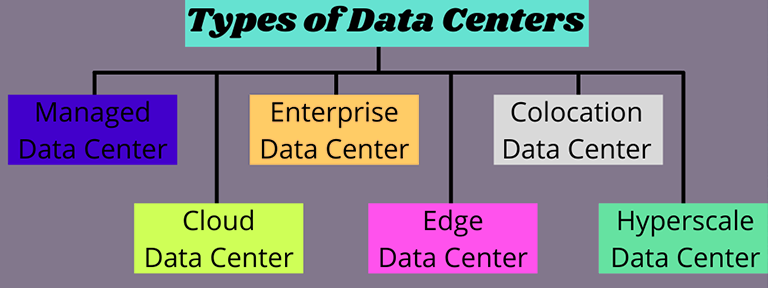
Data centers are typically categorized into the following four types based on ownership, location, and services provided:
- Enterprise Data Centers:
- Owned and operated by large organizations, these data centers cater to their IT infrastructure requirements.
- Often located on-premises, enterprise data centers can house a variety of IT equipment, including servers, storage, and networking components.
- Colocation Data Centers:
- Designed to be carrier-neutral, colocation data centers allow companies to connect with multiple network providers.
- These third-party facilities provide storage, power, cooling, and security services, allowing businesses to house their IT equipment.
- Managed Services Data Centers:
- Managed services data centers can be either owned by enterprises or operated by third-party entities.
- These facilities offer a range of managed services, encompassing IT operations, surveillance, and ongoing maintenance.
- Cloud Data Centers:
- Operated by cloud service providers (CSP) or large organizations providing private cloud services.
- Cloud data centers host various cloud computing resources, including servers, storage, and networking infrastructure.
How are Cloud Computing and Data Centers Interconnected?
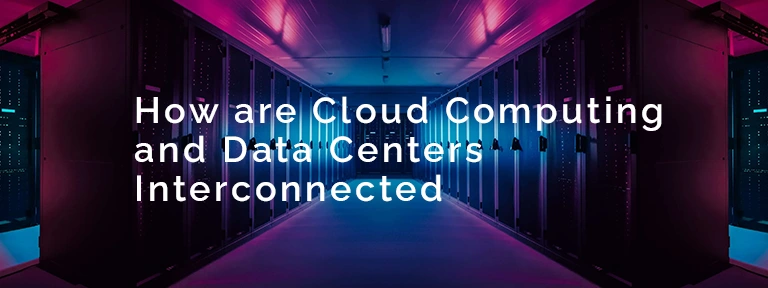
Cloud computing and data centers are intricately interconnected, forming a symbiotic relationship that underpins modern digital infrastructure.
At its core, cloud computing relies on the infrastructure provided by data centers. These data centers house the physical hardware, servers, and networking equipment necessary to support cloud services. They serve as the backbone, providing the essential computing resources that enable cloud computing to function seamlessly.
Conversely, cloud computing enhances the capabilities of data centers by introducing flexibility and scalability. The cloud model allows organizations to access computing resources on-demand, remotely, and with remarkable agility. This flexibility empowers data centers to adapt to changing workloads, ensuring optimal resource utilization.
In essence, the synergy between cloud computing and data centers is vital for the efficiency and effectiveness of contemporary IT operations. The combination allows businesses to harness the benefits of both centralized infrastructure (data centers) and distributed, on-demand services (cloud computing) to meet the dynamic demands of the digital landscape. This interconnectedness facilitates streamlined operations, improved resource utilization, and the delivery of innovative and responsive solutions to end-users.
Choosing Between Data Center Facilities and the Cloud for Your Business
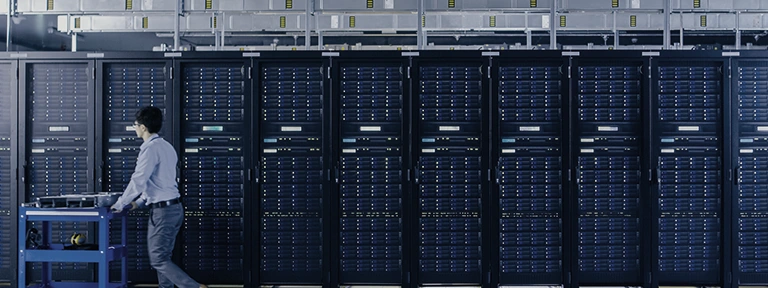
In the realm of modern technology, both cloud computing and data centers stand out as significant innovations. While cloud computing is a relatively recent concept, data centers have been a cornerstone for decades. Despite their distinct histories, these two technologies are closely related and are often recommended to work in tandem, creating a robust and efficient computing environment.
By harnessing the strengths of both cloud computing and data centers, businesses can establish a hybrid IT environment. This hybrid approach combines the reliability and security inherent in data centers with the agility and scalability offered by the cloud. For example, organizations can utilize a data center to host critical applications and safeguard sensitive data, while employing the cloud for non-critical workloads or to manage surges in demand. As a result, businesses gain enhanced control, scalability, and cost-effectiveness over their crucial IT resources.
Furthermore, the integration of data centers and the cloud can yield additional benefits, such as geographic redundancy and disaster recovery capabilities. Through a hybrid infrastructure, businesses can replicate critical applications and data across multiple locations, mitigating the risk of downtime and data loss. This strategic combination allows businesses to optimize their technological capabilities, ensuring resilience and flexibility in the face of evolving operational demands.
5 Advantages of Integrating Cloud Computing and Data Centers

Cloud computing and data centers, though distinct, can be effectively combined by businesses to achieve comprehensive IT objectives. While each technology brings unique advantages, their integration maximizes capabilities and unlocks additional value. Here are five key benefits of using cloud computing and data centers together:
- Enhanced Scalability:
- Combining cloud computing and data centers enables exceptional scalability, allowing swift adjustment of computing resources based on demand.
- Cloud computing facilitates the quick addition or removal of resources without the need to invest in new hardware, ensuring businesses can adapt seamlessly to fluctuating demand, handle traffic spikes, and maintain consistent application and service performance.
- Improved Flexibility:
- The synergy between cloud computing and data centers enhances flexibility by enabling swift deployment and management of applications and data.
- Cloud computing’s ability to rapidly deploy instances and services supports experimentation with features and quick iterations on product offerings. Simultaneously, data centers provide a secure and reliable environment for storing sensitive information, crucial for businesses dealing with sensitive data.
- Cost Efficiency:
- Leveraging cloud computing and data centers offers cost efficiency for corporate businesses, minimizing infrastructure expenses and reducing the cost of managing and maintaining computing resources.
- Cloud computing’s pay-as-you-go model eliminates the need for significant upfront investments in hardware, with the cloud provider handling infrastructure management. Data centers contribute to cost savings by sharing IT resources among businesses, reducing expenses related to power, cooling, and infrastructure maintenance.
- Increased Productivity:
- The combined use of cloud computing and data centers enhances productivity by enabling quick deployment and management of applications and data.
- Businesses can stay agile and responsive to market changes, focusing on core activities. Data centers, by providing a secure environment, streamline workflows, freeing up time otherwise spent on IT maintenance and troubleshooting. This automation allows companies to allocate more time to innovation and creative endeavors.
- Improved Security:
- The integration of cloud computing and data centers elevates the overall security posture of organizations.
- Cloud computing brings advanced security features such as data encryption, identity and access management, and threat detection. Data centers offer a secure environment with redundant power, network connections, and disaster recovery capabilities.
- By leveraging the expertise and resources of cloud providers and data center operators, businesses can fortify themselves against security breaches and data loss, ensuring robust protection against cyber threats.
Wrapping Up
Cloud computing and data centers are intricately woven together, forming a critical synergy essential for the success of digital transformation and the flourishing of businesses in the digital age.
As the demand for digital services continues to surge, along with the imperative for scalability and flexibility, cloud computing has emerged as the predominant solution for organizations worldwide. Yet, this ascent wouldn’t have been possible without the robust support of efficient data centers that furnish the indispensable infrastructure for cloud services.
In the dynamic landscape of technology evolution, we anticipate ongoing advancements in both cloud computing and data center technologies. These progressions aim to further elevate the reliability, performance, and security parameters crucial for the seamless functioning of businesses.
We trust that this article has provided valuable insights into the interdependence of cloud computing and data centers. We invite you to share your thoughts on this subject and any experiences you may have had with cloud services or data centers. Your comments can initiate a meaningful discussion, contributing to the collective knowledge of our community. Feel free to leave a comment below, sharing your insights, questions, or opinions. Your input is valuable and can enrich the understanding of this critical relationship in the digital realm.
Also Read:- 5 Cloud Computing Tips for Businesses




